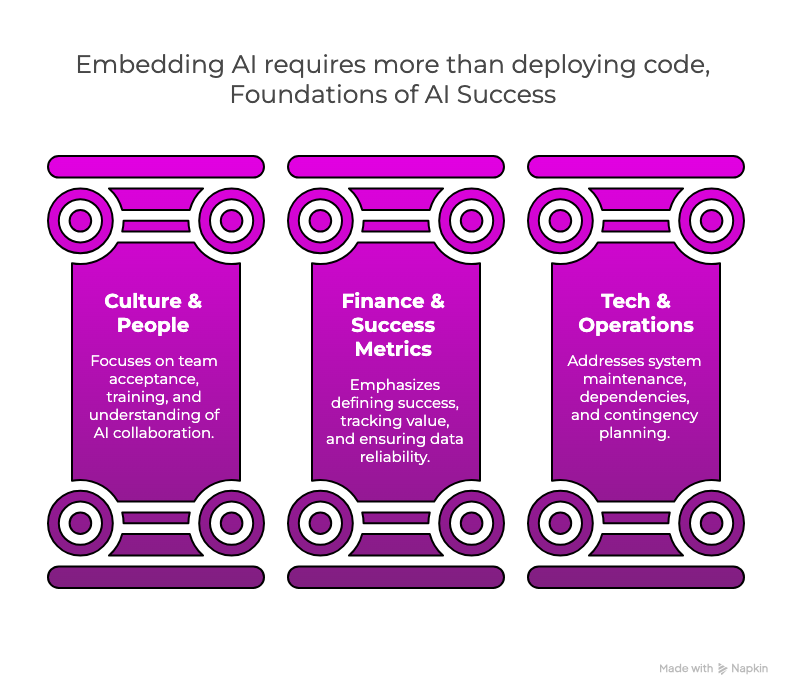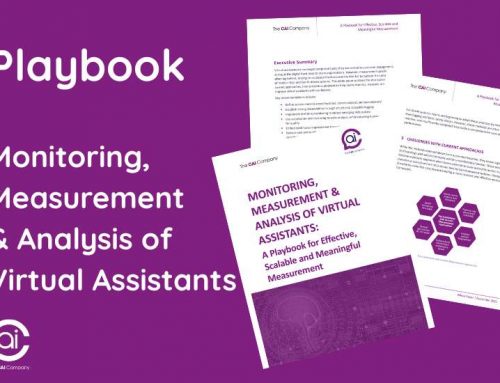You Want to “Do AI”? Great. Now Let’s Talk about Why
Dr Alice Kerly shares considerations for a successful AI implementation.
These days, we’re hearing the same opening line in a lot of conversations: “We need to do AI.”
“We need to do AI.”
It makes me smile because it happens so often. AI is exciting, shiny, and very “now”. But here’s the thing:
AI is not a strategy. It’s a tool. And without knowing what you’re using it for, it’s worryingly easy to build and fail, rather than build and succeed.
Why Do You Want to “Do AI”, Really?
There are many reasons organisations feel pressure to embrace AI. Some of those we hear include:
- The CEO wants it
- Everyone else is doing it
- It looks cool in the press
- It’ll be fun and interesting
- It’ll make things faster, cheaper, better
These aren’t inherently wrong, but if you’re chasing AI for the sake of optics, trendiness or vague promises of efficiency, you risk building something that’s technically impressive but strategically hollow.
It’s Fine to Explore… Just Don’t Stop There
It’s absolutely fine to dive in and explore AI tools. In fact, it’s essential. Try out some of the amazing AI tools already out there. Play with the capabilities. See how they might slot into your existing tech stack. Experiment.
That said: Exploration without purpose is wandering.
Pause. Ask:
- What are the actual problems we need to solve?
- Where are our current inefficiencies – in cost, experience, or process?
- What are our customers struggling with?
- What frustrates our customers or teammates and how can we deliver better experiences?
If you can answer these, your chances of creating something meaningful (and enabling a successful AI implementation) jump dramatically.
Build for the Right Reasons – Not Just For Tech’s Sake
It’s easy to get swept away by a great demo or a shiny new platform. But unless it addresses a genuine need, it risks becoming an expensive curiosity. And without a clear purpose, even the smartest AI can end up being a beautifully-engineered dead end.
Try the tools first. Then step back and consider: can they actually address the issues you’ve identified? If yes, brilliant. But if not, that’s still useful insight and you can shift focus.
And if you’re feeling stuck? Reach out to someone who’s been through this before (ideally someone who’s been doing more than just rebranding themselves as “agentic” this year!).
Can the tools address the issues you’ve identified?
Turning Promise into Reality: The Hard, Messy Middle
Let’s say you’ve found a compelling AI use case. You’ve built a pilot, and it looks promising. But:
Did you know that 80% of AI pilots stall within a year?
It’s rarely because the tech didn’t work. More often, it’s because the business wasn’t ready.
Embedding AI requires more than deploying code, also consider:
Culture & People
- Will teams embrace it, or resist it?
- Have you planned training and change management?
- Do people understand how to work with the AI?
Finance & Success Metrics
- Have you defined what success looks like?
- Is this saving money, improving service and customer satisfaction, being more efficient, or something else of value?
- Are you tracking these in real time, and know you can trust the data?
Tech & Operations
- Who will update, monitor and optimise the system?
- What dependencies or legacy systems are involved?
- What’s your upgrade or fallback plan?
This isn’t AI wizardry – it’s organisational transformation work.

The Bottom Line
AI can truly transform businesses. But transformation starts with clarity – not code. Start with problems worth solving, people ready to change, and processes set up to deliver real value.
- Explore to understand what AI can do.
- Define the real challenges you need to solve.
- Measure progress in meaningful, trusted ways.
- Embed AI into your people, your processes, and your culture.
Then, yes, build, and reap the rewards of a truly successful AI implementation!
AI is not a strategy. It’s a tool.




